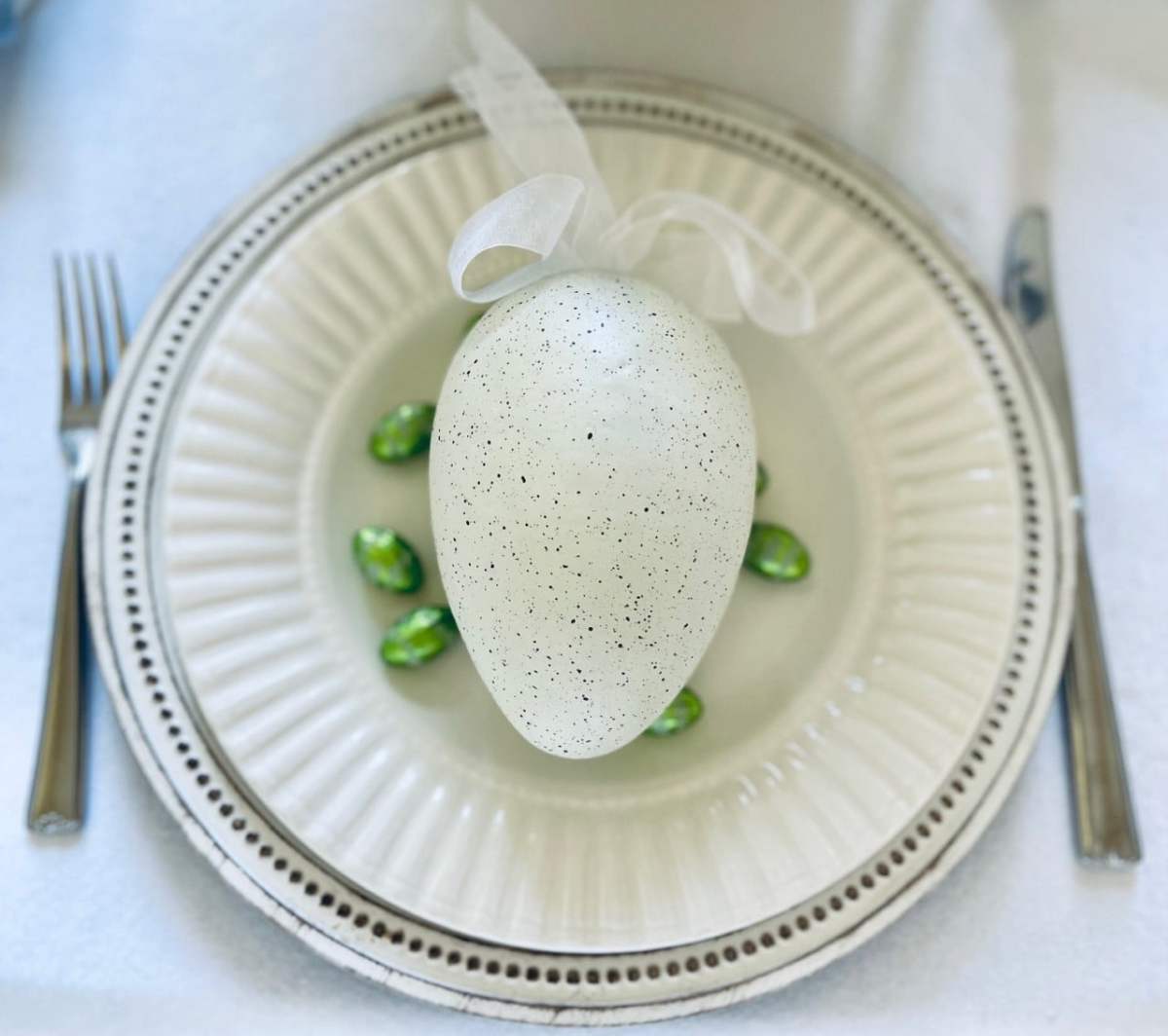Imagine a vibrant Easter brunch, overflowing with the colors of spring, yet entirely free from eggs, dairy, and gluten. This isn’t a sacrifice; it’s a celebration of culinary creativity and inclusivity. Picture a table laden with dazzlingly colorful dishes – sun-kissed citrus salads bursting with fresh herbs, fluffy gluten-free pancakes adorned with vibrant berries, and savory main courses that are both elegant and surprisingly satisfying. This guide unveils the secrets to crafting a truly memorable Easter brunch that caters to dietary restrictions without compromising on taste or visual appeal, transforming limitations into opportunities for innovative and delicious dishes.
We’ll explore a curated collection of recipes designed to delight even the most discerning palates, focusing on fresh, seasonal ingredients to create a menu that’s as healthy as it is beautiful. From stunning main courses to delectable side dishes and show-stopping desserts, we’ll provide detailed, step-by-step instructions, ensuring a stress-free and enjoyable experience for both the chef and their guests. Prepare to be inspired by the possibilities of allergen-free Easter celebrations.
Delicious Dairy-Free, Egg-Free, and Gluten-Free Easter Brunch Main Courses
Planning a delightful Easter brunch that caters to dietary restrictions can be surprisingly easy and enjoyable. These recipes showcase vibrant flavors and textures, ensuring everyone can partake in a festive and delicious meal, regardless of dietary needs. Each dish is meticulously crafted to be free from dairy, eggs, and gluten, using substitutes that enhance the overall culinary experience.
Three Unique Dairy-Free, Egg-Free, and Gluten-Free Easter Brunch Main Courses
Below are three unique main course recipes, perfect for an Easter brunch, designed to be dairy-free, egg-free, and gluten-free. Each recipe is presented with detailed instructions and a visually appealing layout to enhance the Easter theme. Imagine a pastel-colored tablecloth adorned with spring flowers, setting the stage for these vibrant dishes.
| Ingredient | Quantity | Instructions | Notes |
|---|---|---|---|
| Sweet Potatoes | 2 large, peeled and cubed | Roast at 400°F (200°C) for 20-25 minutes, until tender. | Use a gluten-free spice blend for extra flavor. |
| Coconut Milk | 1 can (13.5 oz) | Add to the roasted sweet potatoes. | Full-fat coconut milk is recommended for creaminess. |
| Maple Syrup | 2 tablespoons | Stir in maple syrup for sweetness. | Adjust to your preferred level of sweetness. |
| Cinnamon | 1 teaspoon | Add cinnamon for warmth. | Ground nutmeg or ginger can also be added. |
| Salt | 1/2 teaspoon | Season with salt. | Taste and adjust seasoning as needed. |
This recipe for Roasted Sweet Potatoes with Coconut Milk and Maple Syrup creates a naturally sweet and savory main course. The vibrant orange hue of the sweet potatoes adds a pop of color to your Easter table, complementing the spring theme. Imagine the warm, comforting aroma filling your kitchen as the sweet potatoes roast, their edges caramelizing slightly.
| Ingredient | Quantity | Instructions | Notes |
|---|---|---|---|
| Quinoa | 1 cup, cooked according to package directions | Cook quinoa until fluffy. | Rinse quinoa before cooking to remove saponins. |
| Asparagus | 1 bunch, trimmed and chopped | Steam or sauté asparagus until tender-crisp. | Avoid overcooking to maintain vibrant green color. |
| Cherry Tomatoes | 1 cup, halved | Add halved cherry tomatoes for a burst of freshness. | Use a variety of colorful cherry tomatoes for visual appeal. |
| Lemon Juice | 2 tablespoons | Dress with lemon juice for brightness. | Freshly squeezed lemon juice is best. |
| Olive Oil | 2 tablespoons | Drizzle with olive oil. | Use a high-quality extra virgin olive oil. |
| Salt and Pepper | To taste | Season with salt and pepper. | Adjust seasoning according to preference. |
The Quinoa Salad with Asparagus and Cherry Tomatoes offers a refreshing and healthy option. Picture the vibrant green asparagus spears and the bright red cherry tomatoes scattered amongst the fluffy quinoa, creating a visually appealing and nutritious dish. The light lemon dressing adds a zesty touch, perfectly complementing the delicate flavors of the vegetables.
| Ingredient | Quantity | Instructions | Notes |
|---|---|---|---|
| Butternut Squash | 1 medium, peeled, seeded, and cubed | Roast at 400°F (200°C) for 20-25 minutes, until tender. | Toss with olive oil, salt, and pepper before roasting. |
| Coconut Curry Powder | 1 tablespoon | Toss roasted butternut squash with coconut curry powder. | Adjust the amount of curry powder to your spice preference. |
| Coconut Milk | 1/2 can (13.5 oz) | Stir in coconut milk to create a creamy sauce. | Use full-fat coconut milk for richness. |
| Cilantro | 1/4 cup, chopped | Garnish with fresh cilantro. | Adds freshness and vibrant green color. |
The Spiced Butternut Squash with Coconut Milk presents a warm and flavorful main course. Imagine the vibrant orange hue of the roasted butternut squash, enhanced by the fragrant coconut curry powder. The creamy coconut milk adds a luxurious texture, creating a dish that is both comforting and sophisticated. The vibrant green cilantro garnish adds a final touch of freshness and color.
Alternative Dairy-Free, Egg-Free, and Gluten-Free Easter Brunch Main Course Ideas
A hearty lentil stew, seasoned with herbs and spices, offers a satisfying and flavorful option. Simply sauté onions, carrots, and celery, then add lentils, vegetable broth, and your favorite herbs and spices. Simmer until lentils are tender.
A vibrant spring vegetable frittata (using a flax egg and gluten-free flour blend as a binder) can be a delightful centerpiece. Sauté your favorite spring vegetables, then combine with the flax egg mixture and bake until set.
A colorful and refreshing salad with roasted vegetables, quinoa, and a lemon-tahini dressing provides a lighter, yet equally satisfying, option. Roast your favorite vegetables, toss with cooked quinoa, and drizzle with a creamy lemon-tahini dressing.
Sides and Salads for a Festive Easter Brunch (Dairy-Free, Egg-Free, Gluten-Free)

Creating a delightful Easter brunch that caters to dietary restrictions requires careful planning, but the result is a celebration everyone can enjoy. These vibrant and flavorful side dishes and salads offer a delightful complement to your main courses, ensuring a truly memorable meal. Each recipe is designed to be both delicious and free from dairy, eggs, and gluten.
The following recipes provide a variety of textures and flavors to balance the richness of a dairy-free, egg-free, and gluten-free Easter brunch. They are carefully crafted to be both visually appealing and nutritionally beneficial.
Dairy-Free, Egg-Free, and Gluten-Free Side Dish and Salad Recipes
These five recipes offer a range of tastes and textures, perfect for a celebratory Easter brunch. Each recipe is meticulously detailed for easy preparation.
- Roasted Asparagus with Lemon and Herbs: Preheat oven to 400°F (200°C). Toss 1 pound asparagus spears with 2 tablespoons olive oil, 1 tablespoon lemon juice, 1 teaspoon dried oregano, and salt and pepper to taste. Roast for 12-15 minutes, or until tender-crisp. The vibrant green asparagus spears, glistening with olive oil and punctuated with bright lemon zest, offer a fresh, spring-like counterpoint to richer dishes. Imagine the aroma of roasted asparagus filling your kitchen, a delightful prelude to the brunch to come.
- Quinoa Salad with Roasted Sweet Potatoes and Cranberries: Roast 1 large sweet potato, cubed, with 1 tablespoon olive oil, salt, and pepper at 400°F (200°C) for 20-25 minutes. Cook 1 cup quinoa according to package directions. Combine cooked quinoa, roasted sweet potatoes, ½ cup dried cranberries, ¼ cup chopped pecans, and a simple vinaigrette made with 2 tablespoons olive oil, 1 tablespoon maple syrup, and 1 tablespoon apple cider vinegar. The warm sweetness of the roasted sweet potatoes contrasts beautifully with the tart cranberries and nutty pecans, creating a symphony of flavors and textures in this colorful salad. The vibrant orange of the sweet potatoes, the deep red of the cranberries, and the creamy texture of the quinoa create a visually stunning dish.
- Spring Pea and Mint Salad with Toasted Coconut Flakes: Combine 1 cup fresh or frozen peas (thawed), ¼ cup chopped fresh mint, ¼ cup toasted coconut flakes, and a simple lemon vinaigrette (2 tablespoons olive oil, 1 tablespoon lemon juice, salt, and pepper). The bright green peas, fragrant mint, and delicate coconut flakes create a refreshing and light salad, perfect for a spring celebration. Imagine the vibrant green of the peas juxtaposed with the crisp white of the coconut, a visual feast for the eyes.
- Rainbow Carrot and Beet Salad with Orange Dressing: Roast 1 cup chopped carrots and 1 cup chopped beets with 1 tablespoon olive oil, salt, and pepper at 400°F (200°C) for 20-25 minutes. Whisk together 2 tablespoons orange juice, 1 tablespoon olive oil, 1 teaspoon Dijon mustard, and a pinch of salt and pepper for the dressing. Combine the roasted vegetables with the dressing and garnish with fresh parsley. The contrasting colors of the vibrant orange carrots and deep red beets create a visually striking salad, enhanced by the bright orange dressing. The sweetness of the carrots and earthy beets are perfectly balanced by the tangy orange dressing.
- Grilled Corn Salad with Avocado and Lime: Grill 2 ears of corn until slightly charred. Cut the kernels off the cob and combine with ½ avocado, diced, the juice of 1 lime, ¼ cup chopped red onion, and a pinch of chili powder. The grilled corn offers a smoky sweetness, beautifully complemented by the creamy avocado and zesty lime. The vibrant yellow of the corn, the creamy green of the avocado, and the bright red of the onion create a visually appealing and flavorful salad. The slight char on the corn adds a depth of flavor and a textural contrast.
Nutritional Comparison of Side Dishes and Salads
The nutritional content of these dishes varies, offering a balanced selection of vitamins, minerals, and fiber. A detailed breakdown would require specific serving sizes and ingredient variations, but generally, these recipes are rich in vitamins A and C, fiber, and healthy fats.
| Dish | Key Nutrients |
|---|---|
| Roasted Asparagus | Vitamin K, folate, fiber |
| Quinoa Salad | Protein, fiber, iron |
| Pea and Mint Salad | Vitamin K, vitamin C, fiber |
| Carrot and Beet Salad | Vitamin A, fiber, antioxidants |
| Grilled Corn Salad | Fiber, vitamin C, healthy fats |
Presentation of Side Dishes and Salads
The visual appeal of your Easter brunch is just as important as the taste. Careful presentation can elevate your dishes from simple sides to works of art.
Serve the roasted asparagus in a rustic wooden bowl, its vibrant green color contrasting beautifully with the natural wood. Arrange the quinoa salad in a glass bowl, allowing the vibrant colors of the sweet potatoes, cranberries, and pecans to shine through. The pea and mint salad can be served in individual small bowls, garnished with a sprig of fresh mint. For the carrot and beet salad, use a shallow platter to showcase the vibrant colors of the vegetables. Finally, the grilled corn salad can be served in a large bowl, allowing guests to easily serve themselves. Consider using fresh herbs, edible flowers, and colorful serving dishes to further enhance the visual appeal of your Easter brunch.
Sweet Treats for an Egg-Free, Dairy-Free, and Gluten-Free Easter Brunch
Creating delightful desserts that are free from eggs, dairy, and gluten presents a unique challenge. The absence of these common binding and leavening agents requires careful consideration of alternative ingredients and techniques to achieve the desired texture and flavor. However, with a little creativity and the right substitutions, it’s entirely possible to craft stunning and delicious Easter treats that everyone can enjoy. The following recipes demonstrate how this can be achieved, focusing on vibrant flavors and beautiful presentations.
Dairy-Free, Egg-Free, and Gluten-Free Chocolate Avocado Mousse
This rich and decadent mousse uses avocado as a creamy base, providing a luxuriously smooth texture without any dairy. The natural sweetness of the avocado is balanced by the dark chocolate, creating a sophisticated dessert.
| Ingredient | Quantity | Preparation | Notes |
|---|---|---|---|
| Ripe Avocado | 1 large | Remove pit and scoop flesh into a food processor. | Choose a very ripe avocado for optimal creaminess. |
| Dairy-Free Dark Chocolate | 1 cup, chopped | Melt gently over a double boiler or in short bursts in the microwave. | Use a high-quality dark chocolate for best flavor. |
| Maple Syrup | 2 tablespoons | Add to the food processor. | Adjust to taste, depending on the sweetness of the chocolate. |
| Vanilla Extract | 1 teaspoon | Add to the food processor. | Enhances the overall flavor profile. |
| Pinch of Salt | Add to the food processor. | Balances the sweetness. |
Instructions: Combine all ingredients in a food processor and blend until completely smooth and creamy. Pour into individual serving dishes and chill for at least 2 hours before serving. Garnish with fresh raspberries and a dusting of cocoa powder for an elegant Easter presentation. The vibrant red of the raspberries contrasts beautifully with the dark chocolate, creating a visually appealing dessert.
Gluten-Free Coconut Mango Cake
This light and refreshing cake uses coconut flour for a naturally gluten-free base, and the tropical flavors of mango and coconut create a delightful spring-like taste. The cake’s moist texture is achieved through the use of coconut milk and a careful baking process.
| Ingredient | Quantity | Preparation | Notes |
|---|---|---|---|
| Coconut Flour | 1 cup | Sift for a smoother texture. | Ensure the coconut flour is fresh for best results. |
| Coconut Sugar | ¾ cup | Use a fine-grained coconut sugar for even sweetness. | Can be substituted with other granulated sweeteners. |
| Coconut Milk (full-fat) | 1 can (13.5 oz) | Shake well before using. | Full-fat coconut milk is crucial for moisture. |
| Ripe Mango | 1 large, pureed | Blend until completely smooth. | Fresh mango provides the best flavor. |
| Baking Powder | 2 teaspoons | Essential for leavening. | |
| Vanilla Extract | 1 teaspoon | Enhances the overall flavor. |
Instructions: Preheat oven to 350°F (175°C). Combine all ingredients in a bowl and mix until well combined. Pour batter into a greased and floured (gluten-free flour) 8-inch cake pan. Bake for 30-35 minutes, or until a toothpick inserted into the center comes out clean. Let cool completely before frosting. Decorate with coconut flakes and fresh mango slices, creating a tropical Easter centerpiece. The vibrant yellow of the mango provides a sunny Easter feel.
Dairy-Free, Egg-Free, and Gluten-Free Strawberry Shortcakes
These delightful shortcakes use a simple gluten-free biscuit recipe as a base, topped with fresh strawberries and a light coconut whipped cream. The result is a classic Easter dessert with a healthy twist.
| Ingredient | Quantity | Preparation | Notes |
|---|---|---|---|
| Gluten-Free All-Purpose Flour Blend | 1 ½ cups | Use a blend specifically designed for baking. | Ensure the flour blend is fresh for best results. |
| Baking Powder | 2 teaspoons | Essential for leavening. | |
| Salt | ½ teaspoon | Balances the sweetness. | |
| Coconut Oil | ¼ cup, melted | Provides a tender texture. | |
| Dairy-Free Milk (almond or coconut) | ¾ cup | Provides moisture. | |
| Fresh Strawberries | 2 cups, sliced | Use ripe, juicy strawberries. | |
| Coconut Whipped Cream (dairy-free) | 1 cup | Use a store-bought or homemade version. | Adds a light and fluffy topping. |
Instructions: Preheat oven to 450°F (232°C). Combine dry ingredients. Cut in coconut oil using a pastry blender or your fingers. Gradually add milk until a soft dough forms. Roll out dough and cut into biscuits. Bake for 12-15 minutes, or until golden brown. Let cool slightly. Top each biscuit with sliced strawberries and a dollop of dairy-free coconut whipped cream. Arrange the shortcakes on a platter, creating a visually appealing arrangement. Garnish with fresh mint leaves for an added touch of freshness. The vibrant red strawberries and white coconut cream offer a classic Easter color scheme.
Creating an unforgettable Easter brunch without eggs, dairy, or gluten is entirely achievable, a testament to the versatility of plant-based cooking. This guide has demonstrated that deliciousness and dietary restrictions needn’t be mutually exclusive. By embracing creative substitutions and focusing on vibrant presentation, you can craft a truly special and inclusive meal that delights all your guests. The journey from initial planning to the final flourish of Easter decorations is a celebration of both culinary skill and thoughtful hospitality. So, gather your ingredients, embrace the challenge, and prepare to create an Easter brunch that is not only free from allergens but also overflowing with flavor and festive cheer.
Answers to Common Questions
What are some good substitutes for eggs in baking?
Flax eggs (ground flaxseed mixed with water), chia eggs (similar to flax eggs), applesauce, mashed banana, and silken tofu can all successfully replace eggs in many recipes, depending on the desired texture and outcome.
Can I make these recipes ahead of time?
Many of the dishes can be partially or fully prepared in advance. Check individual recipes for specific instructions on make-ahead options, such as prepping ingredients the day before or assembling components that can be baked or finished just before serving.
Where can I find gluten-free flour blends?
Most major grocery stores carry gluten-free flour blends. You can also find them online or in specialty health food stores. Look for blends specifically designed for baking, as these often contain a mix of flours that create the best texture.
Are all dairy-free milks suitable for these recipes?
While many dairy-free milks work well, some recipes may require specific types for optimal results. Unsweetened almond milk or soy milk are generally good choices, but check the individual recipe recommendations for the best results.


